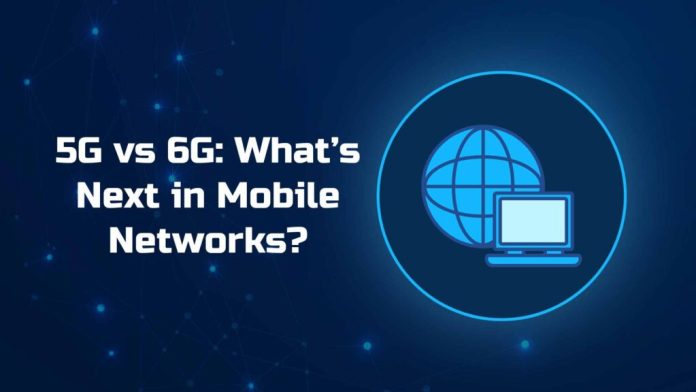The evolution of mobile networks has always been a driving force behind technological progress, shaping the way we communicate, work, and live. From the early days of 2G and 3G to the groundbreaking advancements of 4G and 5G, each generation has brought significant improvements. Now, as 5G continues to expand globally, discussions about 6G—the sixth generation of mobile networks—are gaining momentum. In this article, we explore the key differences between 5G and 6G, the potential of 6G technology, and what lies ahead for mobile networks.
Understanding 5G: The Current Standard
5G, the fifth generation of mobile networks, was designed to address the limitations of its predecessor, 4G, and enable a new era of connectivity. Key features of 5G include:
- Ultra-Fast Speeds: With speeds up to 10 Gbps, 5G is significantly faster than 4G, enabling real-time video streaming, online gaming, and rapid downloads.
- Low Latency: 5G offers latency as low as 1 millisecond, which is critical for applications like autonomous vehicles and remote surgeries.
- Massive Connectivity: 5G can connect up to 1 million devices per square kilometer, supporting the growing Internet of Things (IoT) ecosystem.
- Energy Efficiency: Improved network efficiency reduces energy consumption, making 5G more sustainable.
While 5G is already transforming industries such as healthcare, manufacturing, and entertainment, its full potential is yet to be realized as deployment continues worldwide.
Introducing 6G: The Future of Connectivity
Although 6G is still in the research and development phase, it promises to surpass 5G in every aspect. Expected to be commercially available around 2030, 6G aims to:
- Deliver Speeds Up to 1 Tbps: This would make 6G 100 times faster than 5G, enabling instantaneous data transfers and new applications.
- Achieve Near-Zero Latency: With latency approaching zero, 6G will support ultra-reliable and real-time communication for critical applications.
- Integrate Advanced AI and ML: 6G networks will leverage artificial intelligence (AI) and machine learning (ML) to optimize performance, predict network demands, and enhance security.
- Expand Spectrum Utilization: 6G will explore terahertz (THz) frequencies, offering more bandwidth for higher data rates and capacity.
- Enable Holographic Communication: 6G is expected to make immersive holographic experiences commonplace, transforming communication and entertainment.
Key Differences Between 5G and 6G
While 5G is already a game-changer, 6G will push the boundaries of what’s possible in mobile networks. Here’s a comparison of the two technologies:
| Feature | 5G | 6G |
|---|---|---|
| Speed | Up to 10 Gbps | Up to 1 Tbps |
| Latency | ~1 ms | Near zero |
| Frequency Bands | Sub-6 GHz and mmWave | THz frequencies |
| Device Density | 1 million/km² | 10 million/km² |
| AI Integration | Limited | Advanced and pervasive |
| Applications | IoT, AR/VR, autonomous cars | Holographic communication, AI-driven IoT |
Applications of 6G Technology
While many 5G applications will continue to evolve, 6G will unlock entirely new possibilities, including:
- Holographic Telepresence: Imagine attending a meeting or concert as a holographic projection, creating a sense of physical presence without being there.
- Smart Healthcare: 6G will enable real-time monitoring of patients through nanotechnology and advanced wearables, enhancing preventive care and precision medicine.
- Autonomous Systems: From self-driving cars to drones, 6G will facilitate seamless communication between autonomous systems, ensuring safety and efficiency.
- Digital Twins: 6G will advance digital twin technology, allowing industries to create real-time replicas of physical assets for monitoring and optimization.
- Space-Based Connectivity: Satellites and 6G networks will work together to provide global coverage, eliminating connectivity gaps in remote areas.
Challenges in 6G Development
While the potential of 6G is immense, several challenges need to be addressed:
- High Development Costs: The research, infrastructure, and deployment of 6G will require significant investment.
- Spectrum Availability: The use of THz frequencies demands new regulatory frameworks and efficient spectrum management.
- Energy Efficiency: Operating at THz frequencies will consume more power, necessitating innovations in energy-saving technologies.
- Security Concerns: As networks become more complex, ensuring data privacy and protection against cyber threats will be crucial.
- Global Standardization: Achieving worldwide consensus on 6G standards will be essential for seamless interoperability.
Transitioning from 5G to 6G
The shift from 5G to 6G will not happen overnight. It will be a gradual process, with the two technologies coexisting for several years. Key milestones in the transition include:
- Ongoing 5G Expansion: As 5G networks mature, they will lay the foundation for 6G development.
- Research and Prototyping: Universities, tech companies, and governments are already investing in 6G research and pilot projects.
- Infrastructure Upgrades: Existing network infrastructure will need to be upgraded to support 6G requirements.
- Collaboration and Partnerships: Collaboration among stakeholders will accelerate innovation and deployment.
The Global Race for 6G Leadership
Countries around the world are vying for leadership in 6G technology. Key players include:
- United States: Major tech companies like Qualcomm, Intel, and AT&T are driving 6G research and development.
- China: With significant investments and government support, China is aiming to be a global leader in 6G.
- European Union: The EU is funding initiatives like Hexa-X to advance 6G innovation.
- South Korea and Japan: These countries are leveraging their expertise in telecommunications to pioneer 6G technologies.
Conclusion
The transition from 5G to 6G represents a quantum leap in mobile network technology. While 5G has already revolutionized connectivity, 6G promises to unlock new dimensions of speed, efficiency, and innovation. As we look to the future, the development and deployment of 6G will not only transform industries but also redefine the way we live and interact in an increasingly connected world. By staying ahead of these advancements, individuals and businesses can harness the full potential of next-generation mobile networks.








